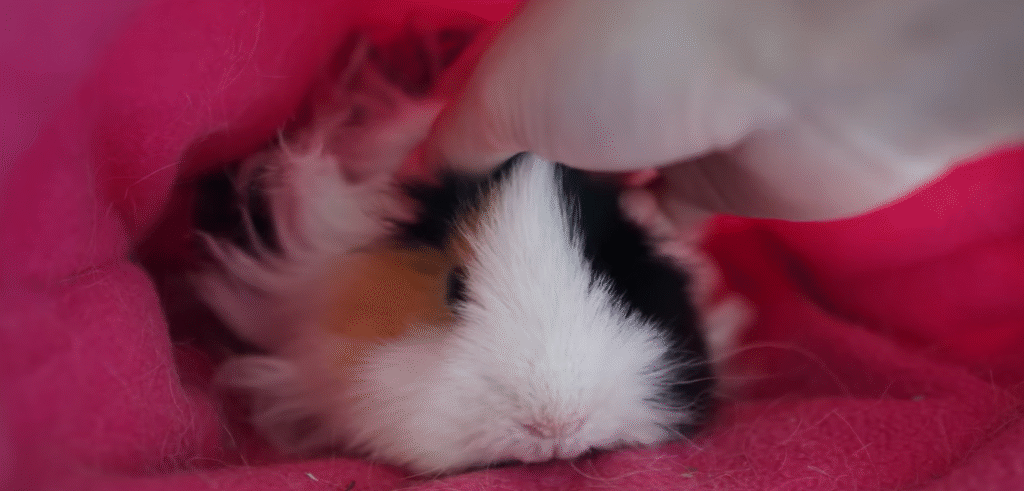| Neutering Detail | Description |
|---|---|
| Ideal Age for Neutering | From 3 to 4 months, once reproductive organs are visible |
| Procedure Type (Males) | Castration (removal of testicles) |
| Procedure Type (Females) | Spaying (removal of uterus and ovaries) |
| Common Reason for Males | Preventing reproduction and reducing aggression |
| Common Reason for Females | Only for medical reasons, due to higher surgical risk |
| Recovery Period | Approximately 7–10 days of limited activity |
| Price Estimate | $80–$120 depending on region and clinic |
| Post-Surgery Needs | Wound care, antibiotics, probiotics, and pain relief |
| Sperm Viability Window | Up to 6 weeks post-neuter before contact with females is safe |
| Trusted Resource | wikihow.com/Neuter-a-Guinea-Pig |

Neutering guinea pigs is becoming more widely recognized as a necessary component of small pet care rather than an optional luxury. It’s a deliberate decision for many owners, one that is based on compassion and influenced by guidance from knowledgeable veterinarians and animal welfare groups. Whether you’re keeping several guinea pigs or just trying to prevent unintentional litters, this small step can have a big impact on long-term peace and well-being.
The culture surrounding pet care has adopted a more preventative stance in recent years. Similar to how dogs’ dental cleanings have become commonplace, guinea pig neutering has become a hot topic in veterinarian offices, online discussion boards, and even influencer channels. One noteworthy trend is the neutering of males by rescue groups before adoption; this procedure makes future introductions easier and drastically lowers unwanted breeding.
When carried out by a veterinarian who specializes in small animals, the actual procedure is regarded as relatively low-risk, particularly for males. The guinea pig becomes sterile and, frequently, a little less territorial after the testicles are removed. Although it doesn’t totally change personality—your boar won’t suddenly start cuddling with people if he wasn’t already—it does eliminate a significant cause of stress and rivalry in communal living.
The narrative changes significantly for female guinea pigs. Spaying is still a rare and more invasive procedure that is only performed when a reproductive disease necessitates it. The procedure should only be performed under the supervision of a highly qualified veterinarian because the risks associated with anesthesia, internal bleeding, and infection are significantly higher in females. Because male neutering procedures are simpler and recovery times are more predictable, many caregivers concentrate their efforts on neutering males.
Ownership of guinea pigs increased steadily during the pandemic, when many people adopted new pets to fight loneliness. However, the overcrowding in rescue shelters and breeding accidents also increased as a result of that spike. In the context of animal welfare, neutering is not merely a personal decision; rather, it is a part of a broader initiative to rehome current pets and lessen shelter overcrowding.
When done properly, the post-operative phase is surprisingly smooth. Soft bedding, restricted mobility, and a quiet area away from other animals or noisy areas are all necessary for guinea pigs recuperating from neutering. Most are drowsy for a day or two, but they recover fast if given proper care. Using a pain reliever prescribed by a veterinarian can greatly ease the discomfort of recuperation. In order to prevent stomach upset, which guinea pigs are especially susceptible to, some clinics even offer flavored probiotic gels.
Owner anecdotes make the process more relatable. After being neutered, one Reddit user reported that their normally timid guinea pig, Baxter, became less aggressive and more inquisitive. Shortly after the six-week waiting period, he developed a strong bond with a female companion. These anecdotes foster a sense of community and provide evidence that, with the correct care, guinea pigs can flourish after being neutered.
It’s crucial to remember that, even though the initial cost may seem high, neutering is actually quite inexpensive when weighed against the potential costs of caring for an entire litter or future health issues. Bundled post-op kits are available at many clinics, and certain humane societies host affordable neuter days just for small pets. These initiatives eventually result in a more manageable daily schedule, cleaner social dynamics, and fewer emergency veterinary visits.
Neutering timing is also important. Once the pig’s reproductive organs are clearly developed, many veterinarians advise doing it as early as three or four months. Early neutering frequently results in more seamless behavioral changes. However, because of surgical visibility and safety concerns, some veterinarians will not perform the procedure before a specific age. In order to avoid premature breeding, owners must take extra care to keep males and females apart if early neutering is not feasible.
Temporary fertility is another important factor to consider. Because sperm may still be viable after neutering, males can still conceive a female for a few weeks. Because of this, it’s crucial to keep them apart for at least six weeks after surgery. If the reintroduction is rushed, it may result in a surprise litter, which would defeat the whole point of the surgery.
Some owners of guinea pigs are hesitant due to concerns about potential surgical complications. Although no procedure is completely risk-free, those carried out by certified exotic animal veterinarians are usually safe and have very low death rates. Neutering is now not only safer but also quicker and more comfortable for the patient thanks to major advancements in surgical methods and anesthesia options over the last ten years.
Guinea pig neutering can be a very useful tool in responsible pet ownership with careful preparation, appropriate aftercare, and selecting the right veterinarian. The choice affects not only the particular animal but also the pet industry as a whole, where overcrowding in rescues and unintentional litters continue to be major issues.
